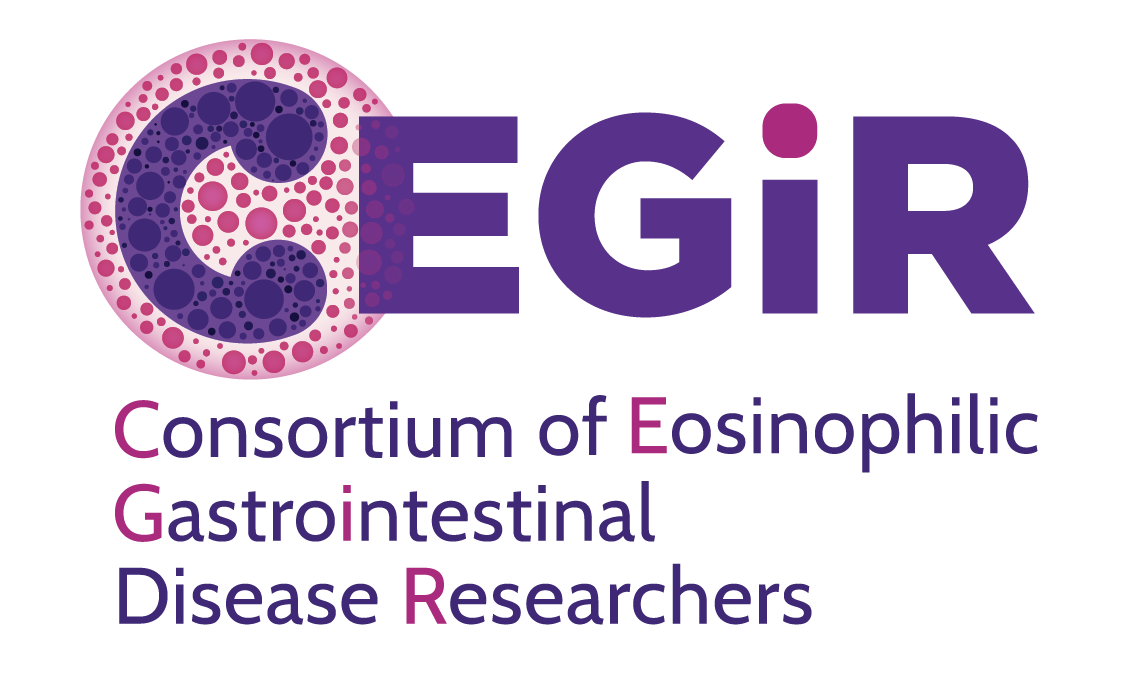Skip to main content
- Campaign Urging Research for Eosinophilic Disease (CURED): A patient advocacy group that supports those suffering from eosinophilic gastrointestinal diseases (EGIDs) and raises substantial funding.
- Candida: A species of yeast that is normally present on skin and in intestinal contents. It can cause superficial infections of the lining of the mouth (called thrush), esophagus, vagina, and skin during or shortly after a course of antibiotics. More serious infections of tissues or the bloodstream may occur in immuno-compromised individuals. Oral/esophageal thrush is a potential side effect of swallowed corticosteroids.
- Carbohydrate: Any substance that has a molecular structure based on sugar, including sugar, glucose, fructose, etc., as well as more complex starches found in plant food sources (fruits, grains, vegetables, etc.).
- CAT Scan: A high-resolution radiographic (x-ray) test that examines the body in cross-sectional perspectives.
- CBC: See Complete Blood Count.
- Cecum: The cecum is the start of the large intestine. Undigested food from the small intestine enters the cecum, and digestion is continued through the large intestine. The cecum is located in the lower right side of the abdomen, and the appendix is attached to the bottom of the cecum.
- CEGIR: See Consortium of Eosinophilic Gastrointestinal Disease Researchers.
- Celiac Disease (Sprue): An autoimmune disease that damages the inner portion of the small intestine (duodenum), and causes malabsorption, causing malnourishment. The reaction is caused by eating foods that have gluten in them. Gluten is found in wheat, rye, and barley, and possibly can contaminate oats. Symptoms of celiac disease include nausea, vomiting, intestinal cramping, and malabsorption. These symptoms subside when gluten is avoided. The inside of the small intestine has small, finger-like projections called villi that help with absorption of nutrients. Flattened villi are often associated with the disease, and their appearance on biopsy/endoscopic evaluation is considered the gold standard for diagnosis in a person who is consuming gluten-containing foods. Blood antibodies to the gluten, gliadin, and transglutimase may also assist with diagnosis.
- Churg-Strauss Syndrome (CSS): See Eosinophilic Granulomatosis with Polyangiitis (EGPA)
- Clinical Outcome Measures: Measurable changes in symptoms, overall health, ability to function, quality of life, or survival outcomes that result from giving care to patients.
- Clinical Remission: Period of time during which signs and symptoms of disease are absent.
- Colitis: Inflammation of the tissues of the large intestine.
- Colon: The large intestine.
- Colonoscopy: A procedure in which a long flexible tube is inserted into the rectum. The tube has a light and video camera on the end of it, which allows view of the entire colon, and part of the small intestine. If needed, tissue biopsies of the inside of the colon can be taken, and polyps can be removed through the scope. The colon must be cleaned out before the procedure, to allow a good view of the colon. This is done by using a laxative, drinking liquids, and no food or drink for a number of hours before the colonoscopy.
- Colostomy: A surgically created hole in the abdomen in which a part of the colon is brought through to the skin surface. A bag must be worn over the hole to collect bowel movements. A temporary colostomy may be needed to allow some bowel tissue to heal after chronic inflammation has been treated.
- COM: See Clinical Outcome Measures.
- Complete Blood Count (CBC): A blood test that includes a count of all the red and white blood cells, platelets as well as hemoglobin, and hematocrit. The eosinophil count is part of the the CBC. Statistics about the red blood cells are also calculated and included in the test results.
- Computed Tomography (CT) Scan: also called Computerized Axial Tomography (CAT Scan), is a special type of X-Ray that results in a series of cross-sectional pictures. CT images are able to show more detail than a regular x-ray. They can show bone and soft tissues, like muscles, vessels, and organs. Sometimes a dye (contrast) is used to help certain areas show up better. The dye is given through an IV, swallowed, or given through the rectum.
- Connective Tissue Disease (CTD): A group of disorders involving the tissue, largely composed of protein, that support organs and other parts of the body. Cartilage and fat are examples of connective tissue. Examples of CTDs include Ehlers-Danlos Syndrome (EDS) and Marfan Syndrome. Research is currently underway to evaluate a potential connection between patients with certain forms of CTDs and EGID.
- Conscious Sedation: A combination of medications that help you relax (sedatives), and not feel pain (anesthetic). When under conscious sedation people are able to respond to commands, but usually do not remember the procedure or feel pain. This is used for minor procedures or surgeries.
- Consortium of Eosinophilic Gastrointestinal Disease Researchers (CEGIR): A collaborative group of scientists, health care providers, patients, and professional organizations dedicated to improving the lives of individuals with eosinophilic gastrointestinal disorders through innovative research, clinical expertise, and education.
- Corticosteroid: See Steroid.
- Crohn's Disease: Also called Regional Enteritis, and Regional Ileitis. A chronic inflammatory condition of the digestive tract. It is a form of inflammatory bowel disease. It can affect anywhere from the mouth to the anus, and commonly affects the small intestine. It can cause abdominal pain, diarrhea and bleeding from the rectum.
- CSS: See Churg-Strauss Syndrome.
- CT: See Computed Tomography Scan.
- CTD: See Connective Tissue Disease.
- CURED: See Campaign Urging Research for Eosinophilic Disease.
- Cushing’s Syndrome: Excess cortisol in the body. This may be caused by the body producing too much cortisol, or from prolonged exposure to corticosteroid medications.
- CVS: See Cyclical Vomiting Syndrome.
- Cyclical Vomiting Syndrome (CVS): Episodic bouts of vomiting, sometimes severe, interspersed with periods of wellness.

